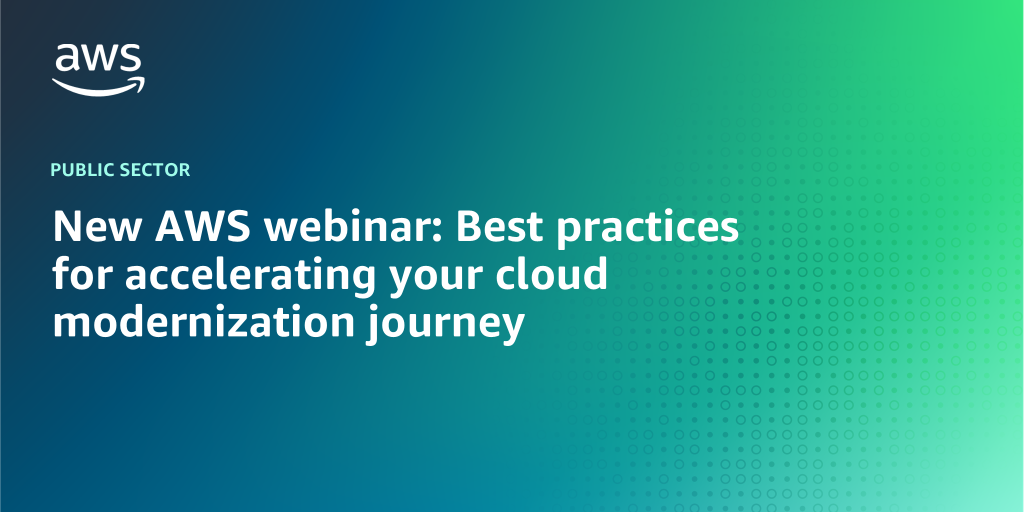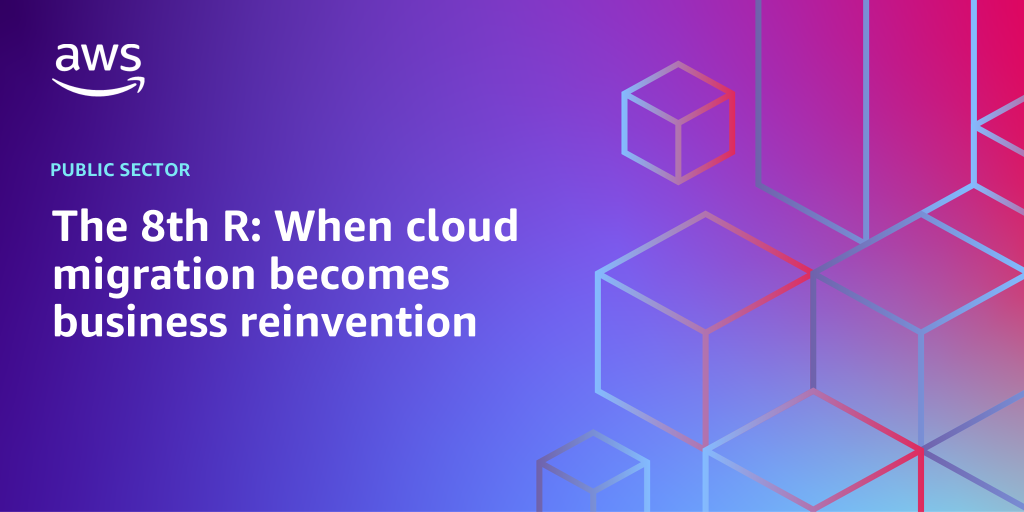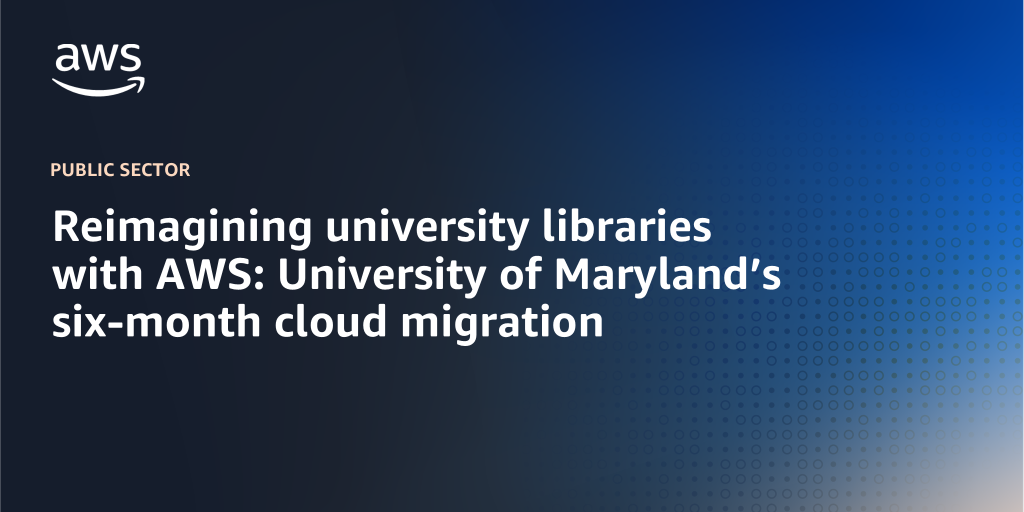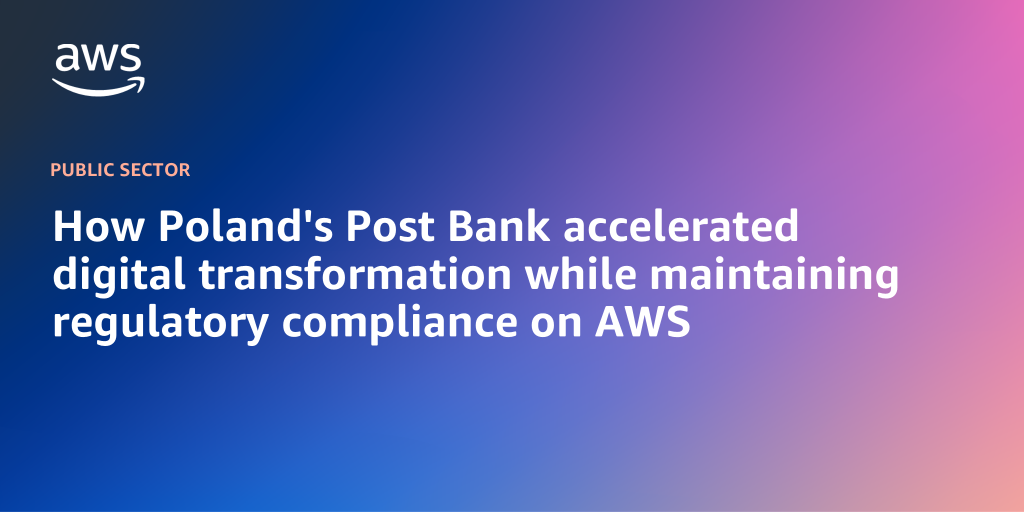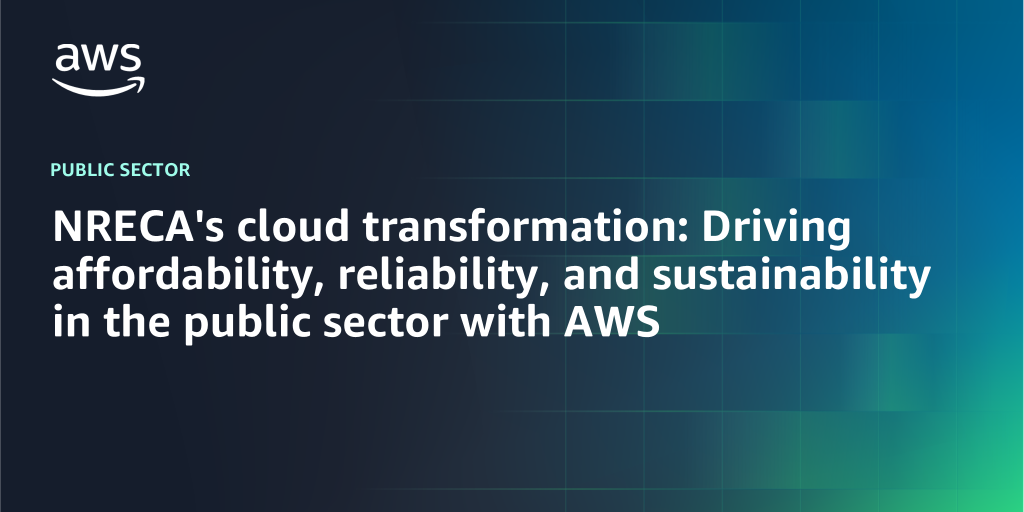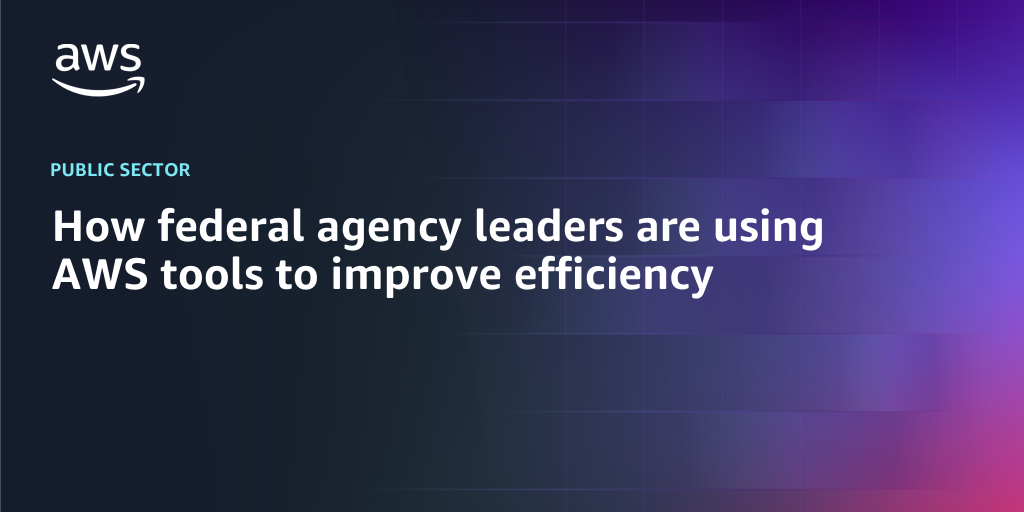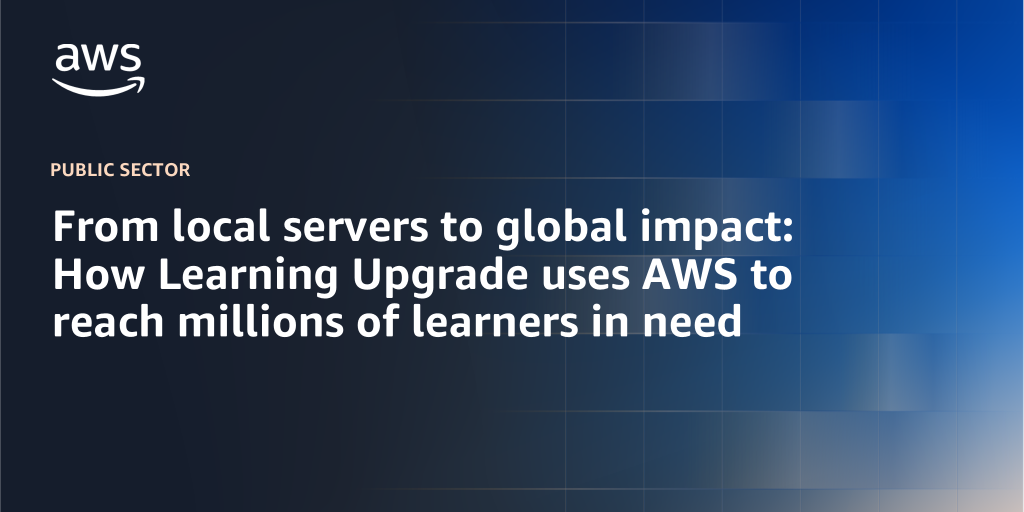AWS Public Sector Blog
Category: Migration
New AWS webinar: Best practices for accelerating your cloud modernization journey
If your public sector organization has been weighing the benefits of cloud migration against concerns about security, costs, skill gaps, or the effort required, a recent BrightTALK webinar offers a roadmap forward. In “Best Practices: Accelerating Your Cloud Modernization Journey,” Amy Wilson, migration and modernization specialist leader at Amazon Web Services (AWS), joined Scott Sinclair, practice director at Enterprise Strategy Group, to share practical strategies for migrating and modernizing on the AWS Cloud. Read this post to learn more.
The 8th R: When cloud migration becomes business reinvention
Traditional cloud migration approaches followed the established 7 Rs: Rehost, Refactor or re-architect, Relocate, Repurchase, Replatform, Retain, and Retire. However, we now see the emergence of an 8th R, Reinvention, which is transforming government agencies into dynamic public value engines. Read this post to learn more.
Reimagining university libraries with AWS: University of Maryland’s six-month cloud migration
The University of Maryland Libraries serves 41,000 students across six physical libraries on its College Park campus. Like many academic institutions, the libraries relied on aging on-premises infrastructure to support their digital services and operations. When the libraries’ IT team faced deteriorating hardware, rising licensing costs, and personnel constraints that threatened operations, they made a strategic decision: retire their data center entirely and transform their infrastructure with AWS.
How Poland’s Post Bank accelerated digital transformation while maintaining regulatory compliance on AWS
By migrating their electronic banking system to Amazon Web Services (AWS), Post Bank reduced application deployment time from 2 hours to only 10 minutes, decreased CPU utilization by 40 percent, and dramatically improved system reliability—all while maintaining full compliance with Poland’s stringent financial regulations. This transformation story demonstrates how financial institutions can use AWS Cloud technology to become more agile and efficient without compromising security or regulatory compliance.
NRECA’s cloud transformation: Driving affordability, reliability, and sustainability in the public sector with AWS
The National Rural Electric Cooperative Association (NRECA) recently completed a migration from a traditional on-premises data center and began using AWS Cloud services. Originally planned for five years, NRECA finished in four. Like most technology, it wasn’t as simple as flipping a switch, but if your organization is considering a similar move, hopefully the NRECA’s experience can act as a guide. Read this post to learn more.
How federal agency leaders are using AWS tools to improve efficiency
Federal agencies are using cloud-based tools to increase productivity, reduce resource use, and improve their ability to efficiently serve the public. This article highlights the pioneering leaders forging new paths into cloud-based government.
From local servers to global impact: How Learning Upgrade uses AWS to reach millions of learners in need
Learning Upgrade worked with AWS to modernize its platform and ultimately migrated fully to the cloud. This strategic shift empowered Learning Upgrade to scale globally, respond faster to new opportunities, and better serve learners in dynamic, resource-constrained environments. Read this post to learn more.
5 steps for building a VMware transition strategy for public sector customers
Broadcom’s acquisition of VMware in 2023 has changed the virtualization game plan for VMware customers. With the clock ticking on expiring VMware licenses, many public sector organizations are seeking alternatives—like migrating workloads to a cloud service provider such as AWS. In this post, we discuss five steps to help your organization navigate this shift successfully and set your team up for success.
Booz Allen Hamilton accelerates mainframe migration with AWS
Many government agencies rely on critical applications running on legacy systems, which is highlighted in a 2023 report by the Government Accountability Office (GAO). These applications are typically monolithic, built on outdated technologies that necessitate workarounds, lack scalability, and incur escalating operational costs. The GAO report identified numerous federal IT legacy systems in urgent need of modernization. To address these challenges, Booz Allen Hamilton, an AWS Partner, offers innovative solutions using multi-tenant architectures. This post delves into one such mission-critical application developed for a large-scale federal agency, showcasing how modern cloud technologies can transform legacy government systems.
How AWS can help partners grow in the Middle East
One of the primary strategies for growth for partners is through global expansion. Amazon Web Services (AWS) continues to invest in infrastructure around the globe. The Middle East is one region with huge potential for growth. According to IDC, more than 75 percent of workloads are on premises in the United Arab Emirates (UAE) and Saudi Arabia. The AWS and IDC report “Unlocking the Full Potential of AI in the Middle East” points out that 28 percent of organizations surveyed in the UAE and Saudi Arabia are currently investing in AI while another 50 percent plan to invest. Read this post to learn more.
